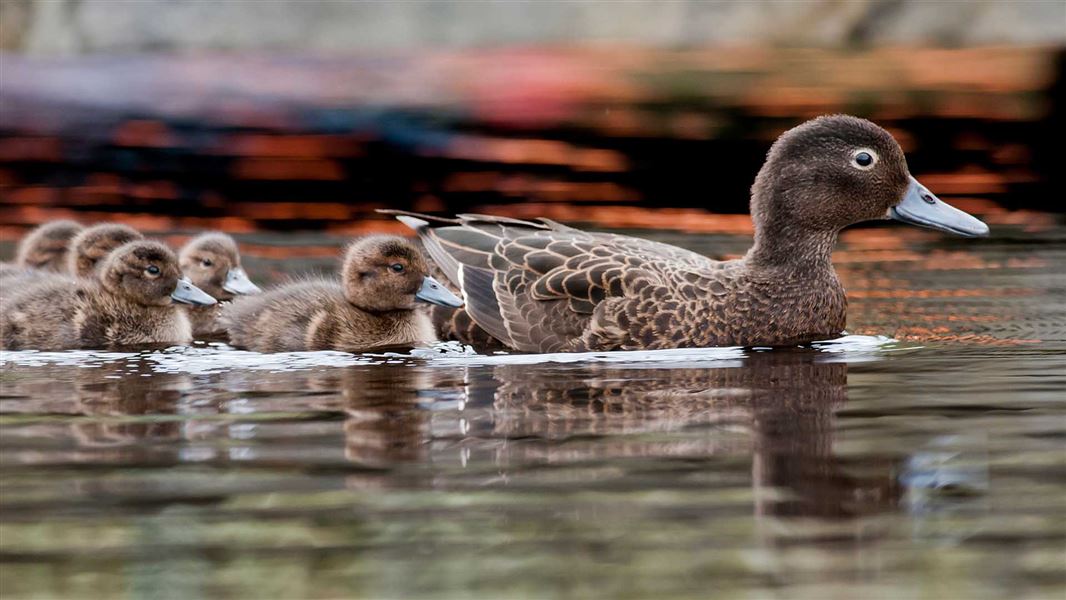Archived content: This media release was accurate on the date of publication.
Date: 04 March 2021
On Thursday 60 of these small but feisty native ducks were flown, courtesy of Air New Zealand, from The Isaac Conservation and Wildlife Trust’s Peacock Springs in Christchurch to start their new life in the heart of Fiordland.
DOC Senior Ranger Andrew (Max) Smart says this translocation is the latest in a long programme of work which aims to re-establish new wild populations.
Pāteke were once the most common waterfowl in New Zealand,” he says “Now, they’re rarest equal along with whio. To turn this around, DOC works with a national captive rearing programme which draws on support from 14 captive breeders around the country to boost their numbers back to sustainable levels.”
Fiordland’s Arthur Valley is one of two sites in the South Island where we can currently attempt this type of work, Max Smart says.
“Thanks to consistent and landscape-scale predator control, including an extensive trapping network and targeted use of 1080, we’re able to keep predator numbers in check which gives pāteke – and many other native species - the chance to flourish.”
Funding from Air New Zealand helps strengthen these efforts with predator traps maintained across 4500 hectares in the Arthur Valley and radio transmitters used to track the pāteke. As part of their partnership with DOC, the airline also provided flights for the birds from Christchurch to Queenstown.
Eventually the valley could hold up to 500 pāteke.
Air New Zealand’s Head of Sustainability Meagan Schloeffel says the airline is proud to transport pāteke to Fiordland and fund predator traps and radio transmitters for the native birds, along with the wider work Air New Zealand does in partnership with DOC.
“It’s a real privilege to support DOC do this incredibly important work to help our native bird numbers and we’re delighted to take the pāteke to their new home.
“Our longstanding partnership with DOC has seen us transport 1409 pāteke over the last 10 years. It’s a special programme to be part of and one closely aligned with DOC and Air New Zealand’s joint vision of New Zealand as a place where our natural environment is thriving.”
The Arthur Valley isn’t without its challenges, however, with flood events hampering the species’ numbers, Max Smart says.
“Generally, survivorship here is really good, however the valley can be flood-prone at times which means younger birds sometimes learn the hard way about where they can and can’t nest.
“Overall, reintroductions across the country are going well and the species is now classified as ‘recovering’.”
The work to restore pāteke requires many helping hands and is undertaken with support from Ngāi Tahu through the involvement of Ōraka Aparima rūnaka. Before pāteke can be released in the wild, crucial conditioning takes place at Peacock Springs in Christchurch run by The Isaac Conservation and Wildlife Trust. The Pāteke Recovery Group has 14 captive breeding facilities across the country making transfers possible.
Background information
Pāteke translocations have been taking place on and off for about 10 years. This year’s translocation builds on last year’s boost of 48 birds, and 63 the year before.
Thanks to the committed collaborators who work together to support pāteke and continued predator control efforts, the aim is for 300 birds to be released over the next few years to give them the best chance of establishing a self-sustaining population.
Contact
For media enquiries contact:
Email: media@doc.govt.nz
